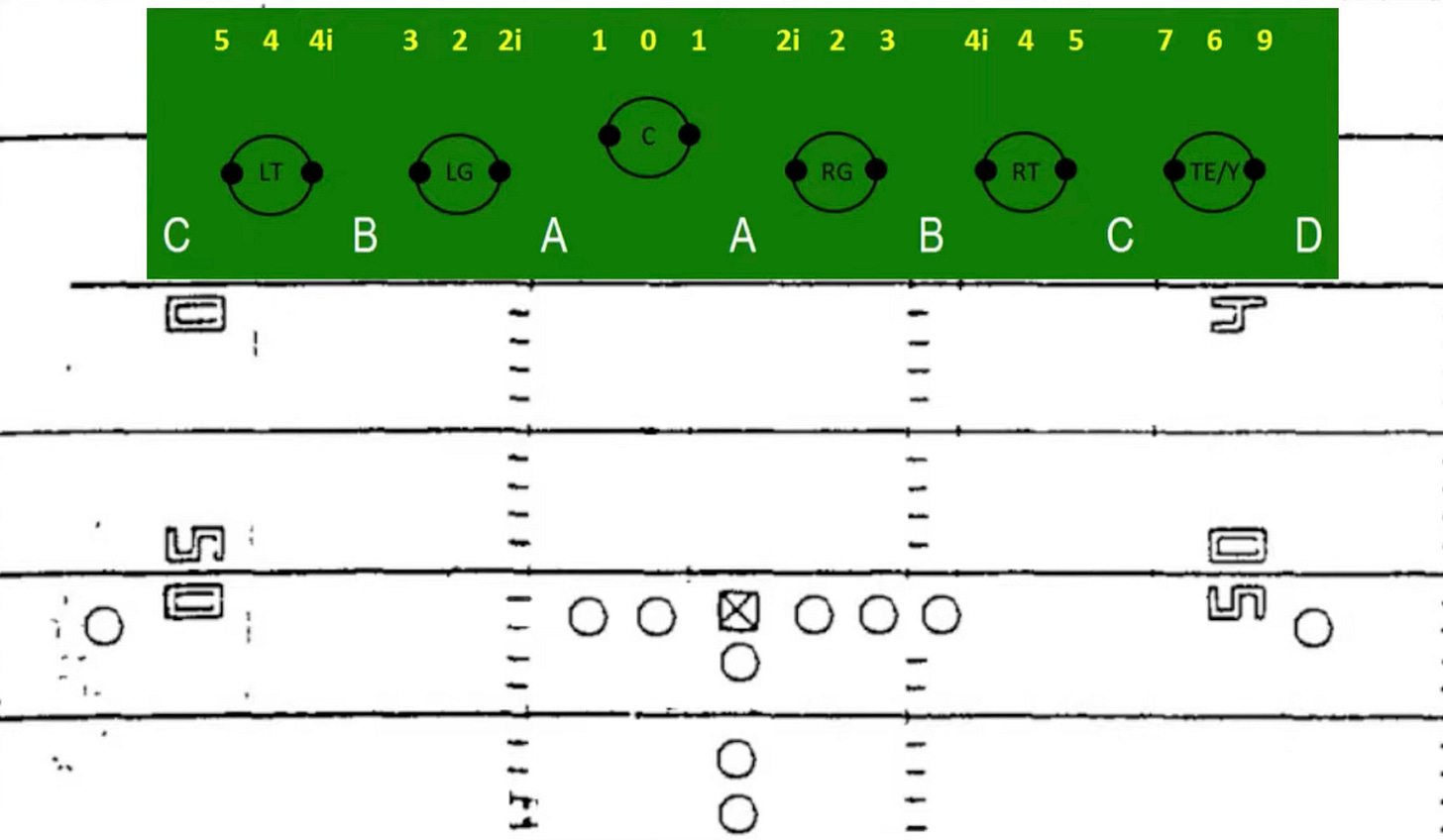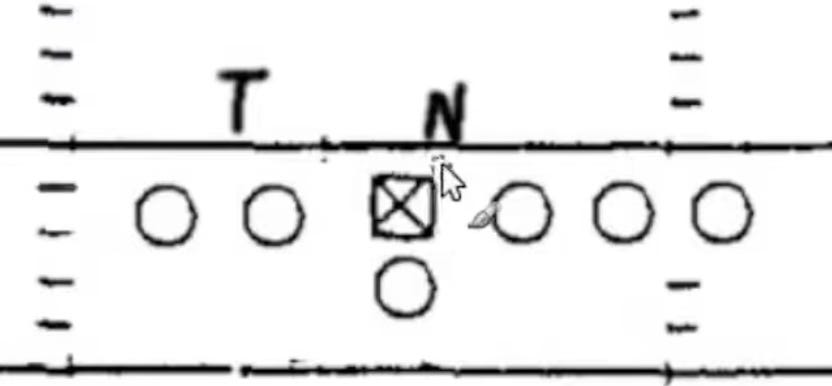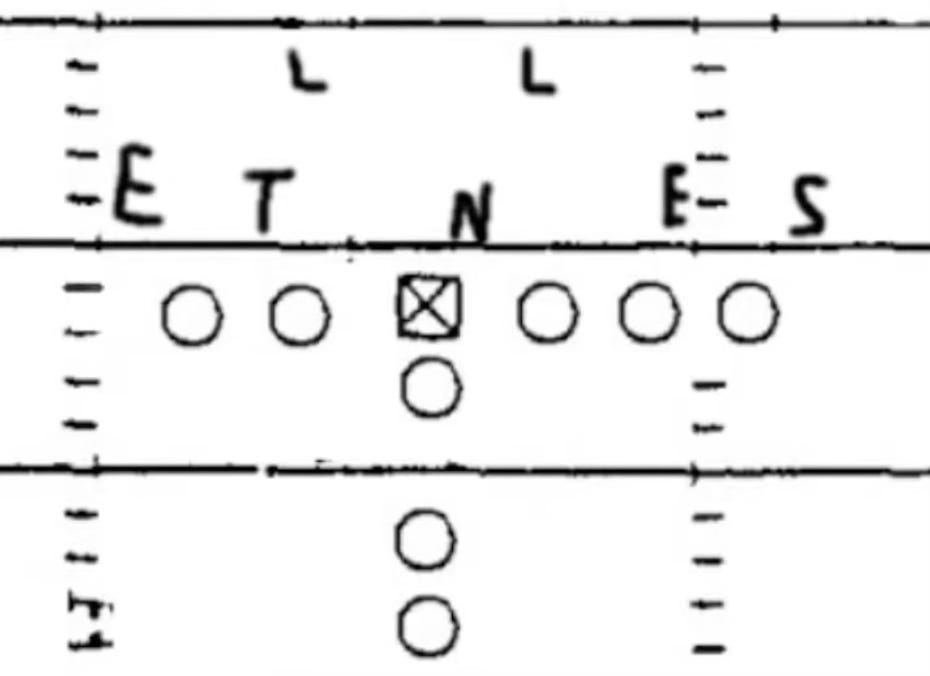Run Defense Basics
Time to refresh our football fundamentals
There’s no shame in it if you sometimes feel overwhelmed by football fundamentals, Xs and Os, strategy, technique, schemes and/or terminology. I’ve invested so much of my life into football and I’m constantly intimidated by how much knowledge a person would have to have to confidently say, “I know ball.”
I’m not putting down other sports like basketball or baseball when I say this, but strategically and fundamentally there is nothing like football.
A basketball team or a baseball team can win games, even championships, if they have just one player who dominates the sport without a strategy or sometimes in the face of one. Or as Mike Tyson said, “Everybody has a game plan until they get punched in the mouth.”
If Michael Jordan improvises 50 points in a game or Barry Bonds hits 70 home runs in a season, that could be enough to win.
It can’t work that way in football. Selfishness and improvisation by any player, even the team’s best player, could be the weak link of an offense or a defense.
There is no aspect of football that exemplifies the concept of one bad apple spoiling the bunch more than when it comes to RUN DEFENSE.
If 10 players do their jobs correctly but one doesn’t, that single mistake could be the reason for a 25-yard touchdown run instead of a 2-yard loss.
Now, Seaside Joe is never the TEACHER when it comes to football fundamentals and schemes. I need help from experts just as much as many of you who are reading this, and many others out there who know a lot more about the sport than I do.
Instead, I research the information, share the source, and steal the hell out of it.
Run Defensive Basics (Pure Football)
Today’s video comes from a YouTube channel called Pure Football, which unfortunately went defunct many years ago after posting about a dozen really good explainers on football. I’ve shared it before — maybe even this same video — but it’s time for a refresher.
I’ll share the link first (watch it) and then I’ll break it down point by point.
What are your immediate thoughts?
Good Run Defense:
Every player knows what gap he is responsible for
They are disciplined to not jump out of their assignment
Get off of their blocks
Bad Run Defense:
Easily confused
Multiple defenders go to the same gap and therefore don’t fill every gap
Don’t get off of their blocks
The Seahawks were quite notoriously terrible at run defense over Pete Carroll’s final few seasons despite Carroll being one of the most well-known advocates for the importance of the run game.
Clint Hurtt’s run defenses:
2022: 30th in yards allowed, 26th in Y/C allowed
2023: 31st in yards allowed, 27th in Y/C allowed
Mike Macdonald’s first season:
2024: 16th in yards allowed, 23rd in Y/C allowed
Seattle’s defensive improvements under Macdonald are well-covered territory, but the run defense especially picked up after allowing 164 yards to the Bills in Week 8. In the final nine games of the season, the Seahawks didn’t allow more than 140 yards to any team (they allowed over that number five times in the first eight games) and they held five of their last nine opponents under 100 yards.
Here are some screenshots and explainers from the video I posted above.
GAPS (Letters) and DEFENSIVE ALIGNMENTS (Numbers):
This is information that many of you already know, but it’s important not to feel ashamed if you don’t; there’s just SO MUCH information crammed in this sport that it can be difficult to grasp or retain it all if it’s not your profession or obsession.
The numbers refer to where the defensive player is aligned, so a 0-technique is heads up on the center, where as a 1-technique will be shaded to the side of the center. A three-technique will be on the outside shoulder of the guard, etc.
The letters refer to the gaps in between the linemen and gaps are the key to the run game.
4-3 defense (4 down linemen, 3 linebackers):
This is just your basic example of a 4-3 defense and what that means. I’ll link to something more specific about Macdonald in a moment.
1-technique Nose Tackle (Biggest Guy)
3-technique Defensive Tackle (Shiftier, Quick Twitch)
5-Technique End
5-Technique End
SAM Linebacker walked down to 7-Technique
Mike Macdonald would be an example of a defensive coordinator who runs a 4-3 defense, but with “3-4 personnel”. Matty F. Brown wrote about this last March if you want a more specific breakdown of Macdonald’s defensive front.
Macdonald is heavily influenced by the defensive system that was already established in Baltimore, basing out of a 3-4 personnel and under front families. “We structure it as a 3-4, we’re really an under team,” he explained to Fox 13’s Aaron Levine. This approach has strong parallels to Carroll’s Seattle.
What is the objective of players in run defense?
Objective: Fill Every Gap (A, A, B, B, C, C, etc.)
It’s that simple. But just because it is simple, doesn’t mean it is easy. Offenses know just as well as defenses what the objective is, so how do offensive coordinators counter a fundamentally sound defense?
IF: Fullback blocks a gap, it creates two new gaps
Klint Kubiak is known for using a fullback as much or more than any other offensive coordinator in the NFL. We should expect that the Seahawks will use a fullback next season at a rate that Seattle fans haven’t experienced in years.
IF: Guard/someone pulls to the other side, it creates two new gaps
We should also expect that first round pick Grey Zabel will be on the move a lot this season. The Seahawks were impressed by his movement skills, as many teams were, which is why he went 18th overall. Zabel on the move as an extra blocker to the right side or at the second level should be a regular occurrence.
7-man fronts won’t have advantage against runs. How a defense fixes this:
Bring down an extra player into the box (usually a safety)
Two-gapping
Drafting a player like Nick Emmanwori in the second round means potentially having an extra safety who plays close to the line of scrimmage in run defense.
Two-Gapping
Usually associated with 3-4 defense (3 down linemen, 4 linebackers)
Key to two-gapping: Not asked to penetrate a gap, but instead to control an offensive linemen. By controlling the OL, you control gaps to either side.
Drafting a defensive tackle like Byron Murphy and re-signing Leonard Williams in 2024 is a move that indicates acquiring players who are strong enough to two-gap. This could be where the concept of “3-4 personnel” maybe fits into Macdonald’s 4-3 defense.
What about a 3-4 defense? How does a 3-4 work against the run?
3-4 Defense:
0 Nose Tackle
4-technique Defensive End
4-technique Defensive End
7-technique Outside Linebacker
7-technique Outside Linebacker
Assignments in a 3-4 defense:
Nose Tackle: Don’t choose a gap, go heads up against center
Ends: Same
Outside Linebackers: Take the outside/cutback lanes
Inside Linebackers: Fill where needed
The Seahawks have talented edge rushers on their roster right now, players like Boye Mafe, Derick Hall, Uchenna Nwosu, and DeMarcus Lawrence. How will they fit together in Macdonald’s defense next season and can they be disciplined against the run?
These are some fundamentals of run defense. If the Seahawks can get back to their fundamentals this season — with arguably their most talented starting defense in years — Macdonald could have this team deep in the playoffs again.
Seaside Joe 2271








I love learning more about the Xs and Os. Things are so much more sophisticated than back in my day (1970s) I also feel MM wants his players to be able to play many different roles/positions. Look at how many different positions Leo Williams lined up in last year. And how many roles he played at any one of those positions. His dropping back in pass coverage against A Rogers led Rogers to throw it right at him. Rogers is a guy who knows where all the threats are and almost never throws a bad pass. But a DT dropping into coverage was so unexpected it was a pick 6.
I also think he is so high on Emmanwori because of his ability to play so many positions and roles on the defense. I saw a stat on him at S. Carolina where he had over 100 snaps at each of the following positions. Safety, outside corner, nickel corner and ILB. Having so many versatile players on the field would mean the offense might still not know the defensive package they are up against despite knowing the 11 players out on the field. Most teams give away the package from the personnel on the field.
This is an excellent breakdown. Football is like a chess match and a game of matchups.
I am very interested in what we do with the new players in the defensive backfield as well 3 safeties? Big nickel? McD and his defensive is very difficult to guess.